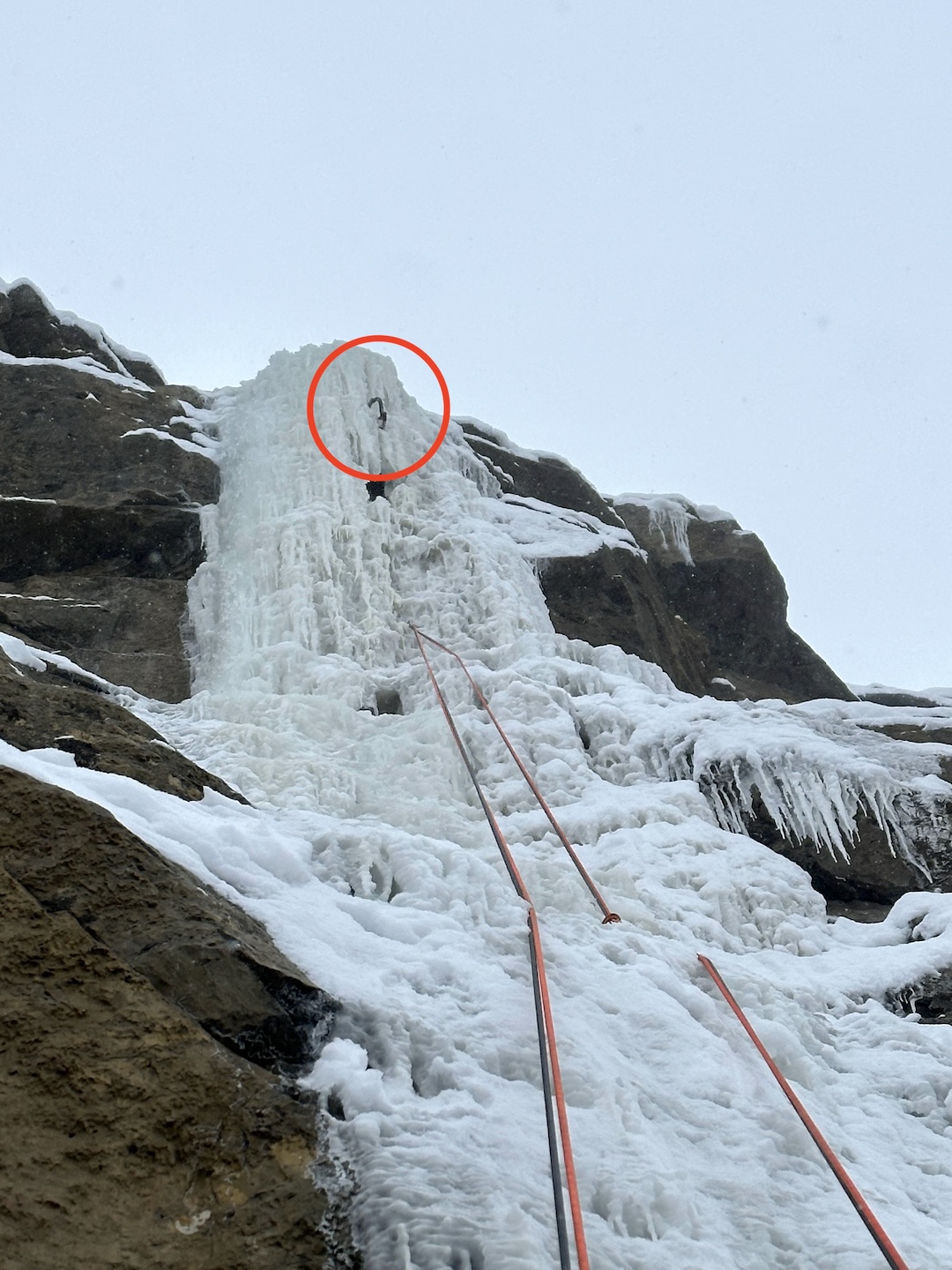Long Fall on Ice
Canada, Alberta, Banff National Park, Mt. Bourgeau

On November 23, I (Michael Cariello, 33) went ice climbing with Luke Bracco (21). Our plan was to climb Bourgeau Right (300 meters, WI4). I decided to lead the first pitch, and from the start it was difficult to get good crampon or axe placements, and basketball- to cooler-sized plates were breaking off. Sometimes it would take five or six hits to clear the ice and get a reasonable placement.
I got to a bolt and considered bailing, but because I’d passed the crux and thought it was WI3 to the top, I continued. I got to a ledge at the end of the first pitch, but the bolts were buried under 10 to 20 centimeters of new snow, and I couldn’t find them. I knew it was around 50 meters from the base of the climb to the top of the second pitch, so I decided to link the first two pitches. I continued and the ice got really good. Then, with 30 to 40 feet left before the second pitch belay, I got to another crux. At this point, I was out of visual and voice contact with Luke.
I got 10 to 20 feet above my last screw. The ice had become dry and brittle. I was holding on with my left hand and shaking out my right. My ice axe was getting icy from frost (it was 15°F), causing my fingers to begin slipping. It felt like my rubber gloves were making it worse. [Cariello was wearing Japanese fishermen’s gloves, popular among some ice climbers.] Though they are warm and moisture resistant, these gloves sometimes get a thin buildup of ice, like peanut butter, and glaze over my poles while skiing. This seems to only occur with these gloves. I had never experienced it with ice tools, but on that day I did.
I was being forced to make some fast choices. I didn’t trust a screw in the brittle ice, so climbing through the last ten feet felt like the best option. I threw my axe out to the right for the next placement. It took several swings to clear the ice and get it to stick. It wasn’t great but felt good enough. When I tried to pull out my left tool, it got stuck. I did a bigger upward pull and my right tool exploded out of the ice. I fell around 50 to 60 feet and either hit something on the way down or partially decked on the belay ledge above the first pitch. I blacked out a bit and realized my right foot was broken. Luke didn’t even know I fell.
I lowered and we assessed my foot: The talus was completely shattered and would require six screws, but there was no damage elsewhere. We splinted my foot and, with only four hours until dark, we decided to self-rescue. We did two 60-meter lowers down steep slopes below the climb while I used my good foot to stay upright. Once or twice I swung a bit, had some memorable impacts, and screamed pretty loud. Then I butt-slid a football field length to get to the last anchor. We did another lower, and I crawled from the base of the gully to the parking lot.
ANALYSIS
I made some poor choices to continue in bad conditions and not bail when given the option. A few red flags were the accumulation of new snow (though avalanche danger was moderate) and the unexpected difficulty of the approach. Low morning temperatures were a concern, as they contributed to brittle, poor ice quality. Previous overnight temperatures were between 25° F and 30°F, and on the night before our climb, it dropped to 6°F. (Source: Michael Cariello.)

